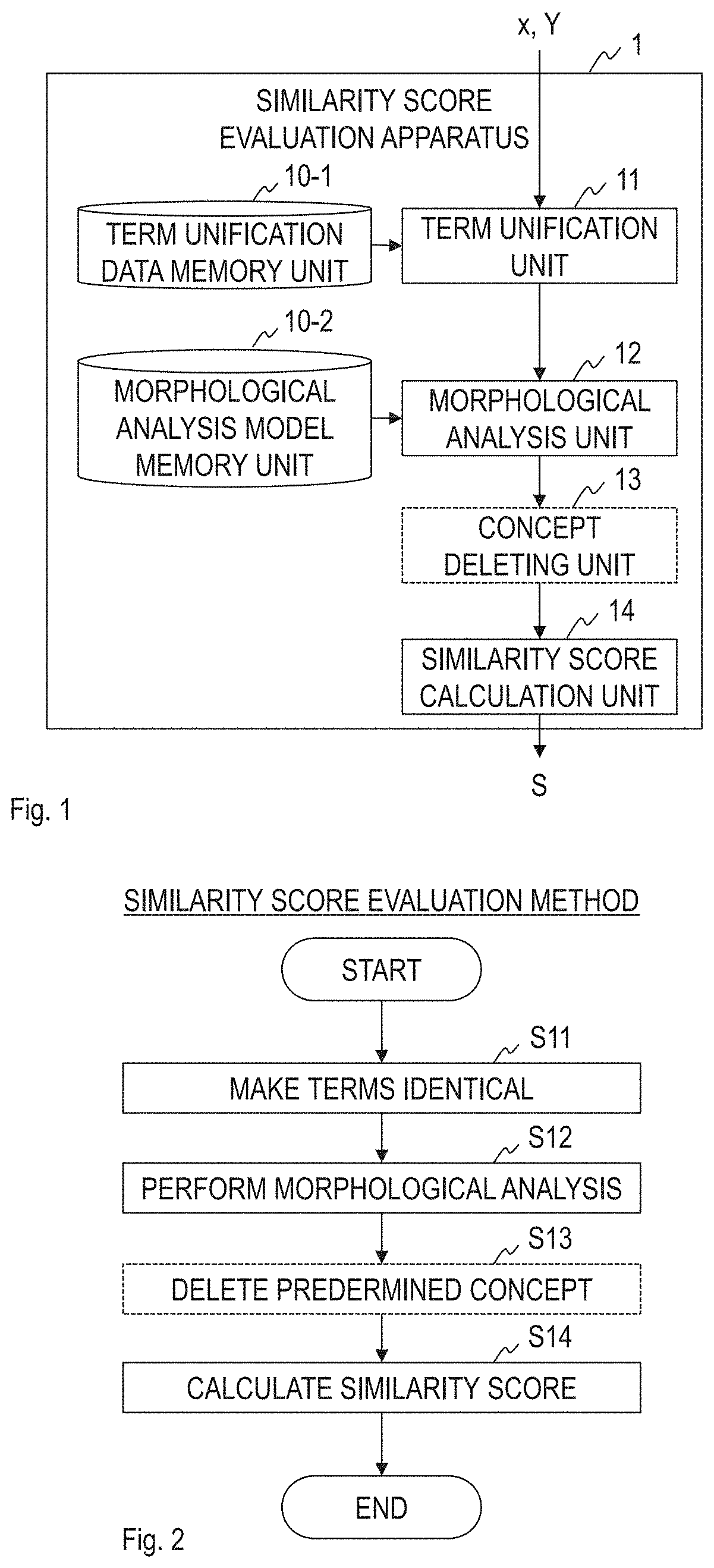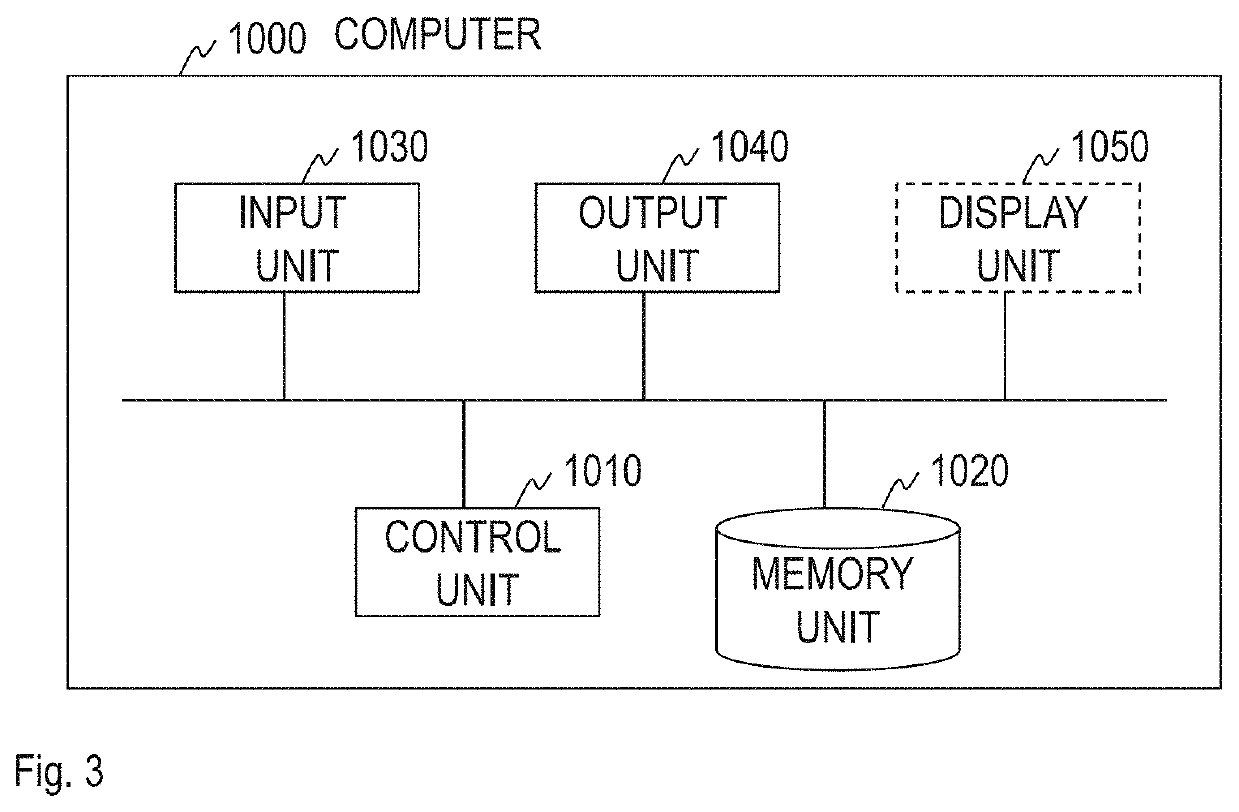Similarity score evaluation apparatus, similarity score evaluation method, and program
a similarity score and evaluation method technology, applied in the field of similarity score evaluation apparatus, similarity score evaluation method, and program, can solve problems such as large distance and wrong calculation of similarity score in terms of concep
- Summary
- Abstract
- Description
- Claims
- Application Information
AI Technical Summary
Benefits of technology
Problems solved by technology
Method used
Image
Examples
concrete example
[0045]Using the example above, a specific flow of processing will be illustrated.
[0046]The character string x input to the similarity score evaluation apparatus 1 is “NTT” (NTT advanced technology corporation), and the character string set Y is {y0=“NTT” (NTT data), y1=“” (baatekujisudononro corporation), y2=“(NTT)” (advanced technology (NTT)), y3=“” (bansu-technology corporation), y4=“” (Nippon Telegraph and Telephone West Corporation)}.
[0047]The processing by the term unification unit 11 converts the character string x into x′=“NTT” (NTT advanced technology corporation), and the character string set Y into Y′={y′0=“NTT” (NTT data), y′1=“” (baatekujisudononro corporation), y′2=“(NTT)” (advanced technology (NTT)), y′3=“” (bansu-technology corporation), y′4=“NTT” (NTT West)}.
[0048]The processing by the morphological analysis unit 12 converts the character string x′ into x″={“NTT”, “” (advanced), “” (technology), “” (corporation)}, and the character string set Y′into Y″={y″0={“NTT”, “...
application example
[0051]The concrete example described above is an extreme case given for easy understanding of the processing steps. In this section one example will be shown where the effect of invention becomes evident when applied to an actual service. Let us assume that Organization A wishes to classify the products it handles into categories, and that there is another Organization B that already has the practice of classifying the products it handles into categories. Let us consider a situation where Organization A classifies the products it handles into categories using the classification method of Organization B as a guide.
[0052]Data of the products handled by Organization A is represented as x1, . . . , x3 in Table 1, where “∘∘∘”, “ΔΔΔ”, “♦♦♦”, and “⋄⋄⋄” represent proper nouns such as makers' names.
TABLE 1No.Product NameX1○○○ free gift package, ○○○ clock, ○○○ bracket clock, alarmclock, radio clock, ○○○ bracket clock, ○○○ alarm clock,○○○ radio clock, digital, wood-grain pattern, calendar,ther...
PUM
 Login to view more
Login to view more Abstract
Description
Claims
Application Information
 Login to view more
Login to view more - R&D Engineer
- R&D Manager
- IP Professional
- Industry Leading Data Capabilities
- Powerful AI technology
- Patent DNA Extraction
Browse by: Latest US Patents, China's latest patents, Technical Efficacy Thesaurus, Application Domain, Technology Topic.
© 2024 PatSnap. All rights reserved.Legal|Privacy policy|Modern Slavery Act Transparency Statement|Sitemap


